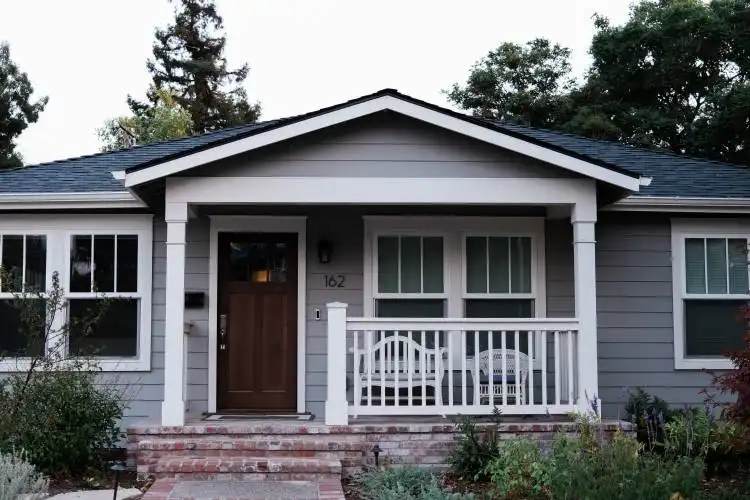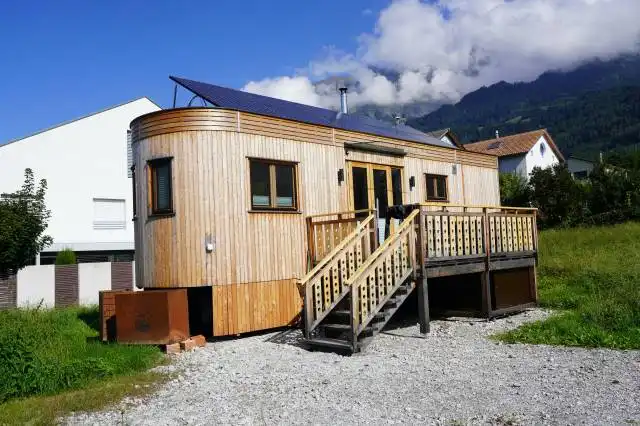Flip a House
Hatching Dreams: The Art of Crafting Ideal Homes in Real Estate
| Updated


HOUSE
Say hello to the world of real estate and construction - the treasure trove of creativity, investment, and lucrative returns. This business idea is all about buying, selling, and renting houses; or building them from scratch. Imagine wearing your imaginative hat to create spectacular living spaces or becoming the genie who fulfills people's dream of owning their perfect house. Being a real estate entrepreneur is like being a matchmaker for people and their ideal homes!
Jump to Business Plan
RELATED BUSINESS IDEAS
Browse ALL Construction & Real Estate Business Ideas
Discover Your Perfect Domain
Unlock the door to your online success with our hand-picked selection of premium domain names. Whether you're starting a new venture or rebranding an existing one, the right domain can set the tone for your digital presence. Browse through our curated list, each with its unique potential to enhance your brand's visibility and credibility.
HOUSE MINI BUSINESS PLAN
This a quick reality check to help you identify the strengths and weaknesses of your business concept before you dive in.
Expected Percent Margin:
- Gross Margin: 30-35%
- Net Profit Margin: 10-15%
Earnings Expectations:
- Per Flip Earnings: $15,000 - $30,000
- Annual Earnings (Assuming 4 houses flipped in a year): $60,000 - $120,000
Actions to Hit Those Numbers:
Property Acquisition:
- Initial Investment: Typically, the cost of a property plus renovation costs should not exceed 70% of the After Repair Value (ARV). So if a property's ARV is $200,000, your all-in cost should be no more than $140,000.
- Property Selection: Choose properties in up-and-coming neighborhoods. Look for signs of progress like new businesses moving in, school district upgrades, or civic enhancements.
Renovation:
- Renovation Budget: Budget an amount equal to about 20-30% of the property's purchase price for renovations.
- Renovation Focus: Kitchens and bathrooms typically offer the highest return on investment. Curb appeal enhancements also offer a strong return.
Sales:
- Sales Strategy: Stage the property and hire a professional real estate photographer to make your listings stand out. Price competitively based on neighborhood comparables.
- Sales Volume: Aim to flip at least 4 properties per year to make a full-time income.
Cost Control:
- Financing: Use a variety of financing methods to keep down payment and interest costs low.
- Unexpected Costs: Always budget an extra 10-20% for unexpected renovation expenses.
These suggestions are meant to be a starting point. Each real estate market is unique, so always do thorough local market research before jumping into house flipping. Consulting with local real estate experts can yield specific insight and advice.
NOT WHAT YOU HAD IN MIND? Here are more ideas



Browse ALL Construction & Real Estate Business Ideas
Grab Your Business Website Name
Before you get caught up in the whirlwind of setting up your business, invest in a domain name. It's a small but significant step that lays the foundation for your brand and makes it easier for customers to find and trust you. Just like you wouldn't build a house without securing the land first, don't build a business without securing your domain name.
"Why? Can't that wait?" Here's why it shouldn't
Step 1: Determine if Flipping a House is the Right Endeavor
Breakdown of Startup Expenses
Before deciding to flip a house, it is important to understand the startup expenses that will be required. These expenses include the cost of the house itself, any renovations that need to be done, and the cost of any materials needed to complete the renovations. It is also important to factor in the cost of any permits or fees that may be required to complete the project. Additionally, it is important to consider the cost of any contractors that may be hired to help with the renovations.
Breakdown of Ongoing Expenses
In addition to the startup expenses, it is important to understand the ongoing expenses that will be associated with flipping a house. These expenses include the cost of utilities, taxes, and insurance. It is also important to factor in the cost of any marketing or advertising that may be necessary to attract potential buyers. Additionally, it is important to consider the cost of any inspections that may be required to complete the sale.
Examples of Ways to Make Money
Flipping a house can be a lucrative endeavor, but it is important to understand the different ways to make money from the project. One way to make money is to purchase a house at a discounted price and then renovate it to increase its value. Another way to make money is to purchase a house that is in need of repairs and then complete the repairs to increase its value. Additionally, it is possible to make money by purchasing a house and then renting it out to generate income. Finally, it is possible to make money by purchasing a house and then reselling it for a profit.
Step 2: Name the Business
Naming a business can be a daunting task, but it is an important step in the process of flipping a house. It is important to choose a name that is memorable and reflects the mission of the business. It should also be unique and easy to spell. Additionally, it is important to make sure that the name is not already in use by another business.
When choosing a name, it is important to consider the target audience. If the business is targeting a younger demographic, then choosing a more modern name might be beneficial. If the business is targeting an older demographic, then a more traditional name might be more appropriate. Additionally, it is important to consider the geographical location of the business. If the business is targeting a local area, then it might be beneficial to include the name of the city or state in the name.
Once a name has been chosen, it is important to make sure that the name is available for use. This can be done by conducting a trademark search to make sure that the name is not already in use. Additionally, it is important to check the availability of the domain name and social media handles. This will ensure that the name can be used across all platforms.
Finally, once the name has been chosen, it is important to register the business with the local government. This will ensure that the business is legally recognized and that all taxes and fees are paid. This will also ensure that the business is protected from any legal issues that may arise.
Step 3: Research the Market
Research the Local Market
Before you start flipping a house, it is important to research the local market. This includes researching the local economy, job market, housing market, and other factors that may affect the value of the property you are looking to flip. You should also research the local zoning laws, building codes, and other regulations that may affect the process. Additionally, you should research the local competition and see what other people are doing in the area. This will help you understand what kind of properties are in demand and what kind of renovations you should be doing.
Research the Property
Once you have researched the local market, it is important to research the property you are looking to flip. This includes researching the property’s history, condition, and any potential issues that may arise. You should also research the property’s estimated value and the estimated value of the renovations you plan to do. Additionally, you should research the estimated time it will take to complete the renovations and the estimated cost of the renovations. This will help you determine if the property is a good investment and if it is worth flipping.
Step 4: Obtain Financing
Types of Financing Available
When flipping a house, there are many different types of financing available. These include traditional bank loans, hard money loans, private money loans, and home equity loans. Traditional bank loans are the most common type of financing and are typically the most affordable option. Hard money loans are short-term loans that are secured by the property being flipped. Private money loans are loans from private investors and can be more expensive than traditional bank loans. Home equity loans are loans that use the equity from the home as collateral.
Tips on Obtaining Financing
When obtaining financing for a house flip, it is important to shop around for the best rates. It is also important to have a good credit score and to provide proof of income. Additionally, it is important to have a detailed business plan that outlines the scope of the project and the expected costs. Finally, it is important to have a good relationship with lenders and to be prepared to negotiate.
Step 5: Make Repairs and Renovations
Types of Repairs and Renovations
When flipping a house, it is important to consider the types of repairs and renovations that will need to be done. Depending on the condition of the house, this could include anything from minor cosmetic repairs such as painting and replacing flooring, to more extensive repairs such as fixing plumbing, electrical, and structural issues. It is important to take into account the cost of these repairs and renovations, as well as the potential return on investment.
Tips on Making Repairs and Renovations
When making repairs and renovations, it is important to consider the cost of materials and labor. It is also important to consider the potential return on investment of the repairs and renovations. For example, if a homeowner is considering replacing a roof, they should consider the cost of the roof and the potential return on investment. Additionally, it is important to consider the quality of the materials and labor used, as this can affect the potential return on investment. Finally, it is important to consider the timeline of the repairs and renovations, as this can affect the potential return on investment.
Step 6: Stage the Property
Staging a property is an important step in flipping a house. It is the process of preparing the house for sale by making it look attractive and inviting to potential buyers. Staging can involve anything from cleaning and decluttering to making minor repairs and renovations. It is important to remember that staging should only be done with an eye towards making the house look attractive and inviting, not necessarily to make it look like a showroom.
When staging a property, it is important to focus on the areas that will be seen by potential buyers. This includes the kitchen, bathrooms, living room, and bedrooms. These are the areas that will make the biggest impression on potential buyers, so it is important to make sure they look their best.
It is also important to remember that staging should be done with an eye towards making the house look inviting and comfortable. This means that furniture should be arranged in a way that is inviting and comfortable, and that the house should be free of clutter. It is also important to make sure that the house is clean and free of any odors.
Finally, it is important to remember that staging should be done with an eye towards making the house look attractive and inviting to potential buyers. This means that any repairs or renovations should be done with an eye towards making the house look attractive and inviting. This includes painting walls, replacing fixtures, and making minor repairs. It is also important to remember to add touches of color and texture to the house to make it look more inviting and attractive.
Step 7: List the Property
Once you have renovated the property and it is ready to be sold, it is time to list the property. Listing the property is one of the most important steps in the flipping process. Here are some tips on how to list the property:
Research the Market: Before you list the property, it is important to research the market to determine the best price for the property. Look at similar properties in the area and compare their prices to determine the best price for your property.
Choose a Real Estate Agent: Choosing a real estate agent is important when listing a property. A real estate agent can help you determine the best price for the property and can also help you market the property.
Take Professional Photos: Professional photos are important when listing a property. Professional photos will help to showcase the property and make it more attractive to potential buyers.
Create an Online Listing: An online listing is a great way to market the property. Create an online listing on websites like Zillow or Trulia to get the property in front of potential buyers.
Utilize Social Media: Social media is a great way to market the property. Create a post on social media platforms like Facebook and Instagram to get the word out about the property.
Hold an Open House: An open house is a great way to get potential buyers to view the property. Hold an open house to give potential buyers a chance to view the property in person.
Step 8: Negotiate the Sale
When negotiating the sale of a house, it is important to remember that the seller is likely to be motivated by the highest possible sale price. Therefore, it is important to negotiate in a way that will get the seller the best possible deal. It is also important to remember that the seller may be willing to negotiate on certain aspects of the sale, such as the closing costs or the length of the closing period.
In order to get the best possible deal, it is important to research the market and understand what similar homes are selling for in the area. This will give the seller an idea of what the market is willing to pay for the house. It is also important to be prepared to negotiate on the price, as well as any other aspects of the sale.
When negotiating, it is important to be respectful and to listen to the seller’s concerns. It is also important to be firm and to not be afraid to walk away if the seller is not willing to negotiate. It is also important to remember that the seller may be willing to negotiate on certain aspects of the sale, such as the closing costs or the length of the closing period.
It is also important to remember that the seller may be willing to negotiate on certain aspects of the sale, such as the repairs that need to be made or the length of the closing period. It is also important to remember that the seller may be willing to negotiate on certain aspects of the sale, such as the closing costs or the length of the closing period. Additionally, it is important to be prepared to negotiate on the price, as well as any other aspects of the sale. Finally, it is important to remember to be respectful and to listen to the seller’s concerns.
Step 9: Close the Sale
The final step in flipping a house is to close the sale. This is the most important step in the process, as it is when you will make your profit. To ensure a successful closing, there are a few tips to keep in mind. First, make sure that you have all the necessary paperwork and documents in order. This includes the purchase agreement, title documents, and any other paperwork required by the state or local government. Additionally, it is important to be prepared to negotiate with the buyer. This may include offering incentives such as closing cost assistance or home warranties. Finally, be sure to have a plan in place for any potential issues that may arise during the closing process.
Finalizing the Sale
Once all the paperwork is in order and the buyer is ready to close, it is time to finalize the sale. This includes signing all the necessary documents, transferring the title, and paying any closing costs. It is important to make sure that all the documents are accurate and that all parties involved are in agreement. Additionally, it is important to ensure that all funds are transferred in a timely manner. Once the sale is finalized, the house is officially flipped and the profits can be collected.
EXPLORE MORE CATEGORIES
Browse ALL Business Idea Categories
TAKE THE NEXT STEPS










